Today Current Affairs: 18th October 2021 for UPSC IAS exams, State PSC exams, SSC CGL, State SSC, RRB, Railways, Banking Exam & IBPS, etc
Table of Contents
Medical Termination Of Pregnancy Rules:

The Government has notified new rules under the Medical Termination of Pregnancy (Amendment) Act, 2021.
- The 2021 Act was passed to amend the Medical Termination of Pregnancy (MTP) Act, 1971.
About the Rules:
- Increased Gestational Limit: The gestational limit for termination of a pregnancy has been increased from 20 to 24 weeks for certain categories of women.
The seven specific categories are:
- Survivors of sexual assault or rape or incest.
- Minors.
- Change of marital status during the ongoing pregnancy (widowhood and divorce).
- Women with physical disabilities.
- Mentally ill women.
- Foetal malformation that has a substantial risk of being incompatible with life or if the child is born, he/ she may suffer from serious physical or mental abnormalities.
- Women with pregnancy in humanitarian settings or disaster or emergency situations.
State-level Medical Board: A state-level medical board will be set up to decide if a pregnancy may be terminated after 24 weeks in cases of foetal malformation.
- The medical boards are to either accept or reject the proposal for medical termination of pregnancy within three days of receiving the request.
- The abortion procedure has to be done with five days of the board receiving the request for the same.
UN Human Rights Council:
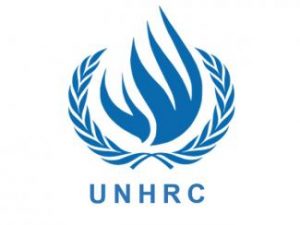
India gets re-elected to UN Human Rights Council for 6th term with overwhelming majority.
- Besides, the US has also joined more than three years after the Trump administration quit the UNHRC over what it called chronic bias against Israel and a lack of reform.
- Human Rights Council candidates are elected in geographical groups to ensure even representation.
- UNHRC was reconstituted from its predecessor organisation, the UN Commission on Human Rights to help overcome the “credibility deficit” of the previous organisation.
- Headquartered in Geneva, Switzerland.
- The UNHRC has 47 members serving at any time with elections held to fill up seats every year, based on allocations to regions across the world to ensure geographical representation.
- Each elected member serves for a term of three years.
- Countries are disallowed from occupying a seat for more than two consecutive terms.
- The UNHRC passes non-binding resolutions on human rights issues through a periodic review of all 193 UN member states called the Universal Periodic Review (UPR).
- It oversees expert investigation of violations in specific countries (Special Procedures).
- The human rights record of the member-states such as Saudi Arabia, China and Russia in the council has also not been in line with the aims and mission of the UNHRC, which has led to critics questioning its relevance.
- Despite the continued participation of several western countries in the UNHRC, they continue to harbour misgivings on the understanding of Human rights.
- Non-compliance has been a serious issue with respect to the UNHRC’s functioning.
- Non-participation of powerful nations such as the US.
AMRUT 2.0:
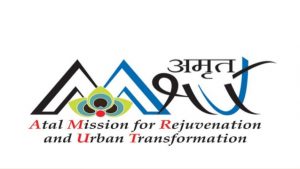
The Union Cabinet has approved the Atal Mission for Rejuvenation and Urban Transformation 2.0 (AMRUT 2.0) till 2025-26.
- This is a step towards Aatma Nirbhar Bharat intending to make the cities ‘water secure and self-sustainable’ through circular economy of water.
- Atal Mission for Rejuvenation and Urban Transformation (AMRUT) was launched to facilitate ease of living to citizens in 500 cities by providing tap connections and sewer connections.
- So far, 1.1 crore household tap connections and 85 lakh sewer/septage connections have been provided
AMRUT 2.0:
- 100% coverage of water supply to all households in around 4,700 urban local bodies by providing about 68 crore tap connections.
- 100% coverage of sewerage and septage in 500 AMRUT cities by providing around 64 crore sewers/ septage connections.
- Adopt the principles of Circular Economy (Generating wealth from waste using 3Rs)
- Promote conservation and rejuvenation of surface and groundwater bodies.
- Data led governance in water management
- Technology Sub-Mission to leverage latest global technologies and skills.
- ‘Pey Jal Survekshan’: To promote competition among cities.
Nihangs:
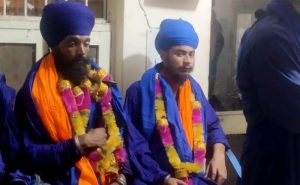
Last year, a group of Nihangs had chopped off the hand of a policeman in Patiala with a sword after he asked them to show ‘movement passes’ during the Covid lockdown.
- This year, they have again killed a man near Singhu border in New Delhi, allegedly for desecrating a sacred text.
- Nihang is an order of Sikh warriors. They are characterised by blue robes, antiquated arms such as swords and spears, and decorated turbans surmounted by steel quoits.
- Etymologically the word nihang in Persian means an alligator, sword and pen but the characteristics of Nihangs seem to stem more from the Sanskrit word nihshank which means without fear, unblemished, pure, carefree and indifferent to worldly gains and comfort.
- Sources trace their origin to Guru Gobind Singh’s younger son, Fateh Singh (1699-1705), who once appeared in the Guru’s presence dressed in a blue chola and blue turban with a dumala (piece of cloth forming a plume).
- On seeing his son look so majestic, the Guru remarked that it shall be the dress of Nihangs, the reckless soldiers of the Khalsa.
- Nihangs observe the Khalsa code of conduct in its strictest sense. They do not profess any allegiance to an earthly master. Instead of saffron they hoist a blue Nishan Sahib (flag) atop their shrines.
International Monetary And Financial Committee:

Union Minister for Finance & Corporate Affairs Nirmala Sitharaman attended the Plenary Meeting of the International Monetary and Financial Committee of the Board of Governors of the International Monetary Fund (IMF) at the Annual Meetings 2021 held in Washington D.C. on 14th October 2021.
- The meeting was attended by Governors/Alternate Governors representing 190-member countries of the IMF.
- The discussions at the meeting centered on “vaccinate, calibrate and accelerate” which is the theme of the Managing Director’s Global Policy Agenda.
- The members of the IMFC elaborated the actions and measures taken by member countries to combat COVID-19 and facilitate economic recovery.
- The IMFC meets twice a year, once during the Fund-Bank Spring Meetings in April, and again during the Annual Meetings in October.
- The Committee discusses matters of common concern affecting the global economy and advises the IMF on the direction of its work.
Ordnance Factory Board:

Seven new defence companies, carved out of Ordnance Factory Board (OFB), were dedicated to the Nation at a function organised by Ministry of Defence on the occasion of ‘Vijayadashami’ in New Delhi on October 15, 2021.
- To enhance functional autonomy, efficiency and unleash new growth potential & innovation, Government had decided to convert OFB from a Government Department into seven 100 per cent Government-owned corporate entities as a measure to improve self-reliance in the defence preparedness of the country.
- These companies have commenced business from October 01, 2021.
The seven new Defence companies are:
- Munitions India Limited (MIL);
- Armoured Vehicles Nigam Limited (AVANI);
- Advanced Weapons and Equipment India Limited (AWE India);
- Troop Comforts Limited (TCL) (Troop Comfort Items);
- Yantra India Limited (YIL);
- India Optel Limited (IOL) and
- Gliders India Limited (GIL).
Global Hunger Index:

India was ranked 101 in the Global Hunger Index (GHI) for 2021 from 94 in the previous year, trailing behind its South Asian neighbours Pakistan, Bangladesh and Nepal.
- The Global Hunger Index (GHI), which tracks hunger and malnutrition, showed that 18 countries, including China, Brazil and Kuwait, shared the top rank, with GHI scores of less than five.
- The report said that wasting among children in India increased from 17.1% between 1998 and 2002 to 17.3% between 2016 and 2020.
- Neighbours Nepal (76), Bangladesh (76), Myanmar (71) and Pakistan (92) are also in the ‘alarming’ hunger category but have fared better at feeding its citizens than India.
- Though India showed improvement in indicators such as the under-5 mortality rate, prevalence of stunting among children and prevalence of undernourishment owing to inadequate food remained high, the report said. It further said food security is under assault on multiple fronts.
- The report was prepared by the Irish aid agency Concern Worldwide and Germany’s Welt Hunger Hilfe. The report termed the level of hunger in India as “alarming”.
- The GHI score is based on four indicators—undernourishment; child wasting or the share of children under the age of five who have low weight for their height, reflecting acute undernutrition; child stunting or the number of under-5 children who have low height for their age, reflecting chronic undernutrition; and child mortality.
- For the 2021 report, data was assessed for 135 countries.
- Out of these, there were sufficient data to calculate GHI scores for 116 countries (in comparison, 107 countries were ranked in the 2020 report). For 19 countries, individual scores could not be calculated, and ranks could not be determined owing to a lack of data.
- The report highlighted that worsening conflict, weather extremes associated with global climate change, and the economic and health challenges associated with the covid-19 pandemic are all driving hunger.
PM GatiShakti:
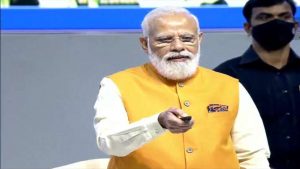
PM GatiShakti — National Master Plan” for infrastructure development has been launched.
- It aims to boost multimodal connectivity and drive down logistics costs.
- It is a digital platform that connects 16 ministries — including Roads and Highways, Railways, Shipping, Petroleum and Gas, Power, Telecom, Shipping, and Aviation.
- It aims to ensure holistic planning and execution of infrastructure projects.
- The portal will offer 200 layers of geospatial data, including on existing infrastructure such as roads, highways, railways, and toll plazas, as well as geographic information about forests, rivers and district boundaries to aid in planning and obtaining clearances.
- The portal will also allow various government departments to track, in real time and at one centralised place, the progress of various projects, especially those with multi-sectoral and multi-regional impact.
- The objective is to ensure that “each and every department now have visibility of each other’s activities providing critical data while planning and execution of projects in a comprehensive manner.
- Through this, different departments will be able to prioritise their projects through cross–sectoral interactions”.
- It will also boost last-mile connectivity and bringing down logistics costs with integrated planning and reducing implementation overlaps.
- Poor infrastructure planning included newly-built roads being dug up by the water department to lay pipes. This has badly affected the road Infrastructure and movement of the country.
- Also, logistics costs in India are about 13-14% of GDP as against about 7-8% of GDP in developed economies. High logistics costs impact cost structures within the economy, and also make it more expensive for exporters to ship merchandise to buyers.
CRISP-M Tool For MGNREG Scheme:
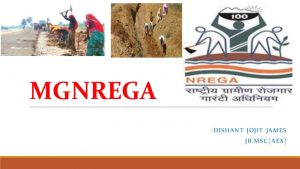
Climate Resilience Information System and Planning (CRISP-M) tool for Mahatma Gandhi National Rural Employment Guarantee Scheme (MGNREGS) was launched.
- CRISP-M Tool will help embed climate information in the Geographic Information System (GIS) based planning and implementation of MGNREGS.
- GIS is a computer system that analyzes and displays geographically referenced information.
- The implementation of CRISP-M will open up new possibilities for rural communities to deal with the issues of climate change.
- This tool will be used in seven states: Bihar, Jharkhand, Uttar Pradesh, Madhya Pradesh, Chhattisgarh, Odisha and Rajasthan.
MGNREGScheme:
- It is one of the largest work guarantee programmes in the world.
- It was launched on 2nd February 2006.
- The Mahatma Gandhi National Rural Employment Guarantee Act was passed on 23rd August 2005.
- Objective To guarantee 100 days of employment in every financial year to adult members of any rural household willing to do public work-related unskilled manual work.
- Unlike earlier employment guarantee schemes, the act aims at addressing the causes of chronic poverty through a rights-based framework.
- At least one-third of beneficiaries have to be women.
- Wages must be paid according to the statutory minimum wages specified for agricultural labourers in the state under the Minimum Wages Act, 1948 (now subsumed under Code on Wages, 2019).
- The most important part of MGNREGA’s design is its legally-backed guarantee for any rural adult to get work within 15 days of demanding it, failing which an ‘unemployment allowance’ must be given.
- This demand-driven scheme enables the self-selection of workers.
- There is an emphasis on strengthening the process of decentralisation by giving a significant role to the Panchayati Raj Institutions (PRIs) in planning and implementing these works.
- The act mandates Gram sabhas to recommend the works that are to be undertaken and at least 50% of the works must be executed by them.




